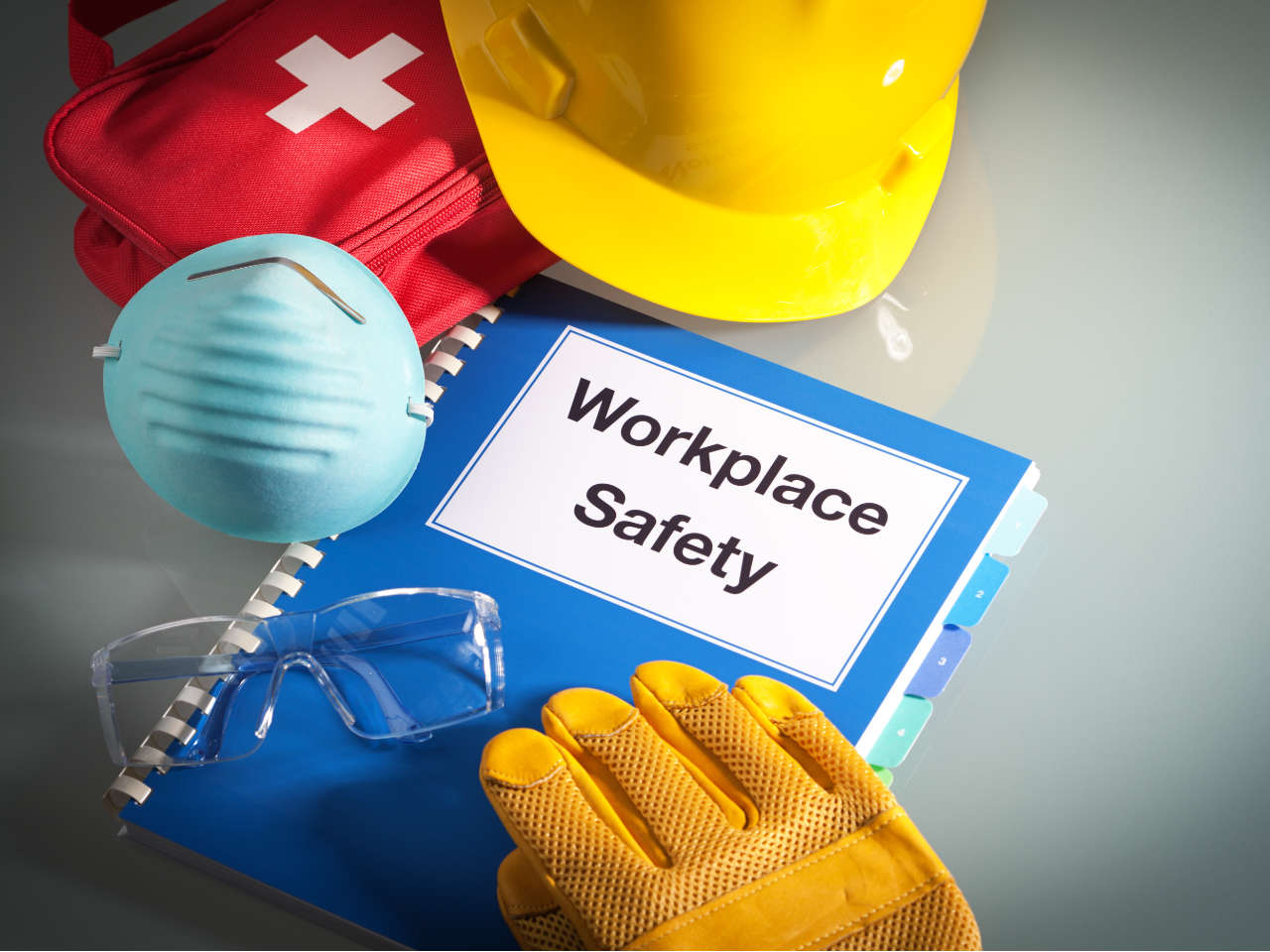
- Learn about the Health and Safety at Work Act 1974 – what it is, how it works and what it covers.
- Understand employer responsibilities under the act, as well as what employees need to do.
- How the Act is enforced, enforcement actions and related legislation.
The Health and Safety at Work Act 1974 is the main legislation for health, safety and wellbeing in workplaces in Great Britain – and has done more to improve workplace safety and employee health over the past 50 years than any other Act of Parliament. Designed to create a safe working environment, it provides an important framework that employers, employees and others must follow to ensure that risks to health and safety are properly controlled.
The Act has had a dramatic impact on health and safety in the workplace. The Health and Safety Executive found that there has been an 84% reduction in fatal injuries to employees in 2018 compared to 1974, with significant declines in non-fatal injuries and days lost to work-related accidents.
All employees are required to undergo health and safety training. Developed by our experienced health and safety consultants, the Health and Safety Awareness Course helps ensure employees can work safely, identify workplace hazards and how to report incidents and potential safety issues.
What is the Health and Safety at Work Act 1974
The Health and Safety at Work Act 1974 (sometimes referred to as HASAWA) sets out the main legislation for employers to ensure the health and safety of employees and visitors to the workplace, including contractors, freelancers, suppliers and the public. It’s known as primary legislation, with secondary or subordinate legislation such as the The Management of Health and Safety at Work Regulations 1999 adding further legal requirements.
The Act sets out what employers must to do to keep employees and others safe and healthy, and what employees themselves must to do to maintain their own and other people’s safety.
The Act also created the Health and Safety Executive (HSE) which, along with local enforcing authorities, is responsible for regulating and enforcing health and safety legislation.
What is the Health and Safety supporting legislation?
The Health and Safety at Work Act is a primary and enabling piece of legislation. Subsequent subordinate legislation is passed under the Act by Parliament to amend, enhance and strengthen the principles set out under Health and Safety at Work Act. The Regulations work together to provide comprehensive legal frameworks for keeping employees and others free from harm and workplaces safe.
Supporting legislation includes:
- Control of Substances Hazardous to Health (COSHH) 2002 – provides regulations that control the use, transport and storage of hazardous substances in relation to employee health.
- Display Screen Equipment Regulations (DSE) 1992 (amended 2002) – regulates employee use of computer or DSE equipment they use to complete their work.
- Manual Handling Operations Regulations 1992 (amended 2002) – designed to protect employees involved in manually moving loads during the course of their duties.
- Personal Protective Equipment Enforcement Regulations (PPE) 2018 – ensures employers provide employees with PPE where the risks to health and safety cannot be otherwise protected.
- Workplace (Health, Safety and Welfare) Regulations 1992 – sets out the minimum requirements for safe and healthy workplaces.
- Regulatory Reform (Fire Safety) Order 2005 – an order passed under the Regulatory Reform Act 2001 governing responsibility for fire safety in premises.
- Reporting of Injuries, Diseases and Dangerous Occurrences Regulations (RIDDOR) 2013 – requires employers to keep accurate records and report accidents and injuries at work.
What are employer responsibilities?
All employers must comply with the Health and Safety at Work Act and there are no exemptions.
The Act details the legal duties that you must follow to protect the welfare, safety and health of all employees or anyone who visits your place of work, or that could be affected by activities involved in carrying out your work. This covers freelancers, members of the public, clients, temporary employees and contractors.
While the Act is detailed, the key duties include:
- All employers must have a Health and Safety Policy and if the organisation has five or more employees, then it has to be written down. This should be created in consultation with employees or their representatives, such as a trade union or a representative of employee safety.
- Placing responsibilities on management to ensure that a health and safety management system is in place that includes a policy, that organisational responsibilities are defined and understood and that arrangements and procedures are developed to protect everyone such as working at height, manual handling operations, slips, trips and falls, display screen equipment use.
- Employers must appoint someone competent to help meet their health and safety duties. A competent person is someone with the necessary skills, knowledge and experience to manage health and safety.
- Conduct risk assessments and regular inspections and assessments of premises, equipment and systems of work.
- Provide a workplace that is safe to work in, with walkways and corridors that are adequate and free from slip and trip hazards and adequate heat, light and ventilation.
- Provide a safe system of work, such as ensuring equipment, plant, systems and machinery are safe to use, maintained and workers are trained and competent.
- Provide adequate facilities for employee welfare at work, such as washrooms, drinking water and toilet facilities and first aid.
- Complete assessments such as for asbestos containing materials or fire safety assessments, and put in place actions to eliminate risks or controls such as training to ensure managers and employees are competent to undertake their roles.
- Ensure employees are properly informed about workplace hazards, such as chemicals, processes and activities, and provide adequate supervision, training and instruction. Training must be provided free of charge to employees and within the working day.
The key to your duties hinges on the fact that the measures taken should be ‘reasonably practicable’ which is at the centre of the Act and qualifies the requirements.
This enables employers to assess and evaluate the risks and the costs in time, trouble or cost to eliminate or control the risk to an acceptable level. For example, it might be impossible to remove all risks from the workplace or prohibitively expensive, but it would be ‘reasonably practicable’ to train employees and ensure risks are regularly assessed and evaluated.
To help further guide employers there are Approved Codes of Practice (ACOPs) and Guidance Notes published by the HSE which should be taken into account in the decision-making process.
What are employee responsibilities?
The onus doesn’t rest solely on the employer. Employees are expected to behave reasonably and take an active role in health and safety in the workplace. The Health and Safety Executive has some helpful Health & Safety posters and leaflets you can download and make available in the workplace.
Generally, employees should:
- Follow and adhere to the training provided by an employer.
- Take reasonable care on their own and other people’s health and safety.
- Report incidents or concerns to a responsible person, such as a manager or supervisor.
- Work with the employer to create a safe working environment.
How is the Health and Safety at Work Act 1974 enforced?
The Health and Safety at Work Act 1974 is enforced by both the Health and Safety Executive, and under licence by local enforcement authorities, depending on the industry or aspect of safety regulated.
For example, the HSE generally conducts inspections and enforcement in construction and engineering organisations, whereas the Local Authority Environmental Health Officer will inspect and enforce in offices, hospitality and shops.
The Health and Safety at Work Act gives enforcing authorities a range of powers to inspect premises and check compliance with the Act, including unannounced entry to a site.
Inspection powers include the right to:
- Investigate and examine potential breaches to check compliance.
- Gain entry to premises without notice at reasonable times.
- Inspect documents, make copies, dismantle and remove equipment.
- Take samples of substances from premises.
- Seek assistance from staff, enforcement agencies and the police.
- Ask questions of employers and employees under caution.
Falling foul of the Health and Safety at Work Act 1974 can carry significant penalties for employers.
These range from Prohibition and Improvement notices that instruct employers to start or stop carrying out specific activities, either within a set timeframe or immediately. More serious enforcement actions can result in prosecution – for employers, managers and employees – as well as fines and even imprisonment for the most serious breaches.
Health and safety training
Make sure your employees are aware of workplace health and safety issues with our Health and Safety Awareness training. It’s IOSH Approved and CPD Certified and gives employees the information they need to work safely.
Our IOSH Managing Safely course helps managers and supervisors to promote a positive health and safety culture in the workplace. The course provides participants with the skills to control risks by collaborating with their teams, implementing appropriate precautions, reviewing safe systems of work, evaluating health and safety performance, and effectively reporting and investigating incidents.
We also offer IOSH Safety for Executives and Directors which helps business leaders to understand and fulfil their health and safety responsibilities in the workplace.

Adam Clarke
Managing Director (Consulting)
